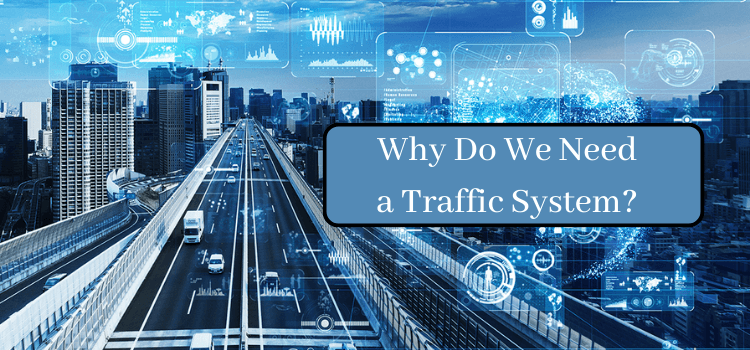A traffic detection system is the main tool that is used in order to reduce the number of accidents and to increase the traffic flow. It also provides a full scenario overview of the traffic condition to every vehicle. It can be used to integrate with social media in order to promote communication and awareness.
Listed Top Reasons Why Traffic Control Systems Matter
Reduce accidents
When we talk about reducing accidents with a traffic system, we mean using technology to prevent or reduce car crashes. Traffic accidents are a common problem worldwide. They can cause health and financial damage to the state and community. Fortunately, research has been done to make roads safer.

There are many ways to decrease accidents, including speed limits and active electronic mechanisms. Drivers also need to be given appropriate warnings when they are about to go into hazardous situations. Using a lane departure warning system can help you avoid a collision. Lane departure warning systems work by monitoring your lane markings and alerting you if you start to drift. The system can take control of your vehicle if it senses that you are about to drift.
Other methods for reducing accidents with a traffic system include implementing access management strategies. This can reduce the number of intersections on major roads, encourage riders to share rides, and increase transit use. By rerouting traffic, drivers can get to their destinations on time. Rerouting traffic can also help to eliminate traffic jams.
In the past several decades, the number of vehicles on the road has increased. Increased traffic has caused congestion and increased road accidents. It is crucial to improve vehicle traffic flow.
Research has been conducted to develop a traffic system that can minimize accidents on the road. Smart traffic systems use advanced technologies to provide drivers with warning messages. Some of the approaches include forward collision systems, speed limits, and electronic stability control.
One proposed approach is Efficient Emergency Message Broadcasting (EEMB). EEMB is designed to prevent multiple road crashes. EEMB uses a routing scheme that broadcasts emergency messages with minimal overheads.
Another approach is the Distance-Based Routing Scheme. The scheme calculates the distance between a vehicle and an intersection. It then sends an alert to other vehicles in the same vicinity. If a vehicle changes its path, it broadcasts a secure warning message, which gives further information to other vehicles.
A third proposed approach is the Advanced Distance-Based Routing Scheme. This approach works to reduce accidents at intersections by calculating the distance of vehicles in the vicinity.
Communicate potential risk areas
It’s no secret that communication is a key component of transportation safety, security, and emergency management efforts. The best way to convey information about potential risk areas is to engage with stakeholders and relevant groups. For example, Amtrak has developed a standardized Safety Awareness Program, which provides print and multimedia tools to help riders and commuters alike stay safe and sound. They also introduced the Txt-a-Tip program, a text message service for passengers to report suspicious activity.
While no one wants to be a victim, a lack of effective risk communications can amplify the hazard and its consequences. A good risk communication plan should include the following: Identifying the risk areas, developing appropriate messaging, and integrating risk communications with the rest of the infrastructure. These steps will help minimize risk and increase system resilience.
In addition to the aforementioned measures, organizations should also consider the best ways to engage their communities. This includes a willingness to listen to input, as well as participation in the risk management decision making process. As a result, a unified front may well be the key to improving safety, security, and emergency management across all modes of transportation.
An integrated approach to risk communication will help transportation operators make their mark on the national landscape. Developing a robust network of stakeholders, a solid methodology, and the ability to leverage resources will go a long way towards building a resilient and effective transportation system. Ultimately, the most important task is to identify and address the risk areas for your specific mode of transportation.
For example, if you run a bus or truck company, you might want to partner with a rail system or a cruise line to better understand the challenges and opportunities faced by each of them. Similarly, if you operate a transit system, you might be interested in collaborating with a bus or ride sharing service. If you have the budget and the appetite, you might want to consider a pilot project. Developing a formal risk communication plan is not a daunting proposition as long as you have the right leadership in place to support it.
Integrate with social media
Creating a traffic system for your website that involves social media is an effective way to increase brand awareness and create opportunities to connect with your audience. When you are able to extend your marketing strategies to include social media, you have an advantage over your competitors. Whether your business is small or large, integrating social media into your strategy can help you improve your visibility, expand your audience, and build a strong reputation.
There are many types of integrations that can be implemented, from Twitter to Facebook. In addition to providing users with a way to share your content, these tools also provide useful analytics. For example, plugins such as ShareThis and AddThis offer simple integration and allow you to track your customers’ activity and interests.
When implementing a traffic system for your website, you need to make sure that you are actively managing your social media platforms. This means filling out profiles, optimizing posts for engagement, and posting links to your website’s content. Keeping your information up to date will protect your brand from outdated information, which may reflect negatively on you. If you don’t have the time or resources to manage your social media profiles yourself, you can hire a company to handle the task for you.






Leave a Reply